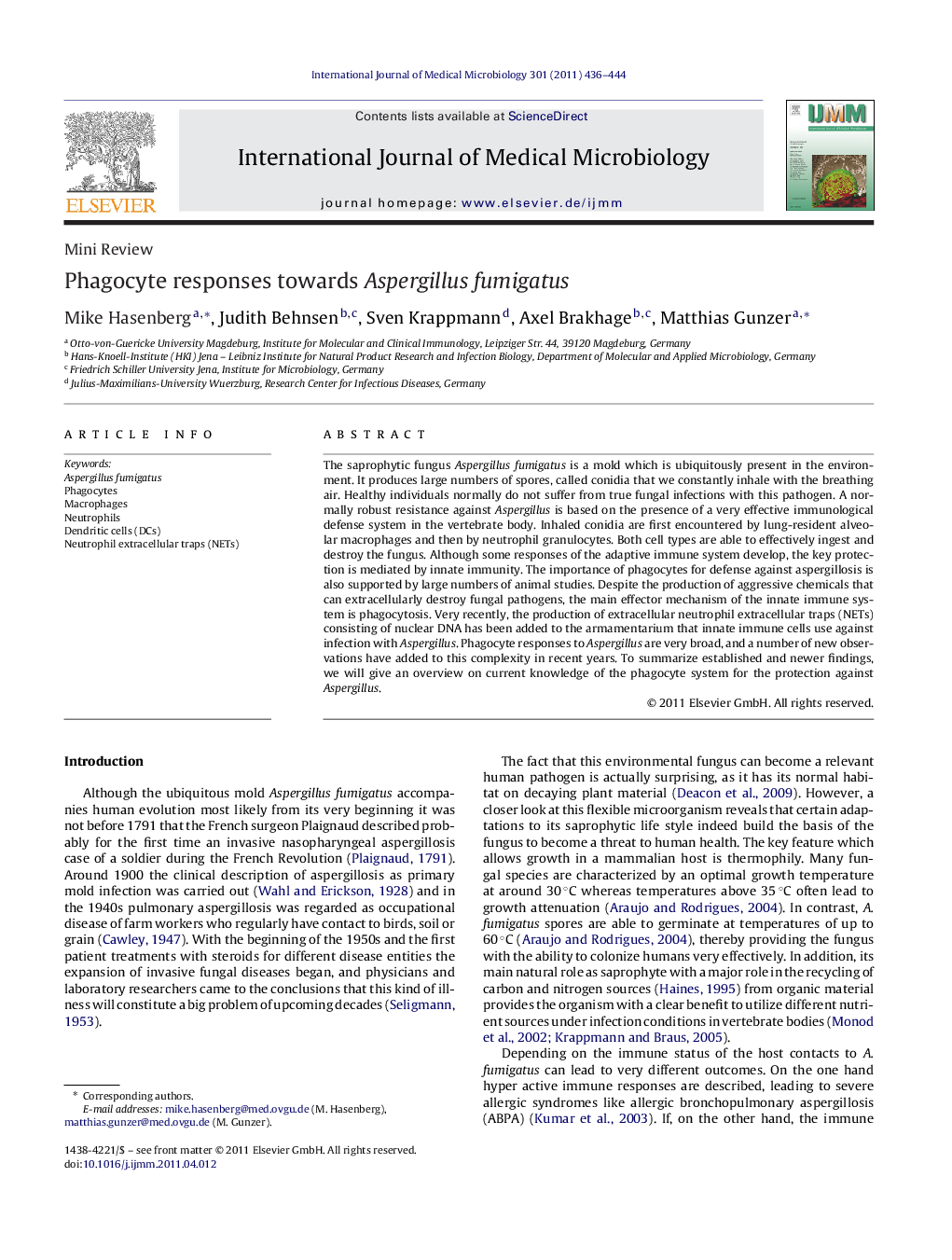| کد مقاله | کد نشریه | سال انتشار | مقاله انگلیسی | نسخه تمام متن |
|---|---|---|---|---|
| 2054081 | 1543716 | 2011 | 9 صفحه PDF | دانلود رایگان |

The saprophytic fungus Aspergillus fumigatus is a mold which is ubiquitously present in the environment. It produces large numbers of spores, called conidia that we constantly inhale with the breathing air. Healthy individuals normally do not suffer from true fungal infections with this pathogen. A normally robust resistance against Aspergillus is based on the presence of a very effective immunological defense system in the vertebrate body. Inhaled conidia are first encountered by lung-resident alveolar macrophages and then by neutrophil granulocytes. Both cell types are able to effectively ingest and destroy the fungus. Although some responses of the adaptive immune system develop, the key protection is mediated by innate immunity. The importance of phagocytes for defense against aspergillosis is also supported by large numbers of animal studies. Despite the production of aggressive chemicals that can extracellularly destroy fungal pathogens, the main effector mechanism of the innate immune system is phagocytosis. Very recently, the production of extracellular neutrophil extracellular traps (NETs) consisting of nuclear DNA has been added to the armamentarium that innate immune cells use against infection with Aspergillus. Phagocyte responses to Aspergillus are very broad, and a number of new observations have added to this complexity in recent years. To summarize established and newer findings, we will give an overview on current knowledge of the phagocyte system for the protection against Aspergillus.
Journal: International Journal of Medical Microbiology - Volume 301, Issue 5, June 2011, Pages 436–444